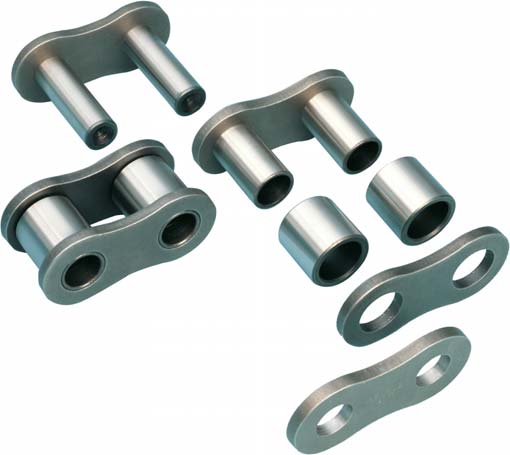Connecting Link – Press Fit (BS/DIN/ANSI)
The common connecting link for ANSI series detachable chains,  also utilised on riveted chains exactly where higher speeds or arduous disorders are encountered. Provided with two connecting pins riveted in to the outer plate, another outer plate remaining a press match onto the pins and secured by split pins following assembly. Press match connecting links can only be utilized once; new hyperlinks need to generally be used to replace dismantled hyperlinks.
also utilised on riveted chains exactly where higher speeds or arduous disorders are encountered. Provided with two connecting pins riveted in to the outer plate, another outer plate remaining a press match onto the pins and secured by split pins following assembly. Press match connecting links can only be utilized once; new hyperlinks need to generally be used to replace dismantled hyperlinks.
Cranked backlinks
Aside from the specialized chains where the cranked link is surely an essential design and style function, cranked links are applied only wherever the chain length needs to be an odd amount of pitches. This practice is not really encouraged; all drives need to, wherever doable, be developed with enough all round adjustment to guarantee using an even amount of pitches during the chain. Don’t USE CRANKED Backlinks ON IMPULSIVE, Very LOADED OR High Velocity DRIVES.
Cranked Website link – Slip Fit (BS/DIN) Offset Website link – Slip Match (ANSI)
A single link with cranked plates pressed onto a bush and roller assemble on the narrow finish. A clearance match connecting pin (No. 128) is fitted in the broad end and is secured by a split pin.
Cranked Website link Double (BS/DIN) Two Pitch Offset Hyperlink (ANSI)
Double cranked back links can be found for many sizes and kinds of chain. The unit includes an inner website link (No. four), with cranked links retained permanently in place by a riveted bearing pin. Screw operated extractors break chain by forcing the finish softened bearing pins out of the outer link plates. For other brands of chain, the rivet swell need to initially be ground away.
